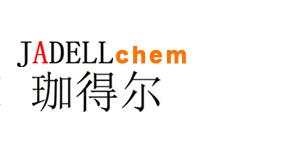Recombinant Human basic Fibroblast Growth Factor, 145a.a. 是一种内皮细胞和成纤维细胞的有效有丝分裂原和化学诱导剂,含有 145 个氨基酸。
Synonyms
rHubFGF, 145a.a.; bFGF; FGF-2; HBGF-2; FGFB
Species
HumanSource
E. coli Accession
P09038 Gene ID
2247 Molecular Weight
Approximately 16.4 kDa AA Sequence
ALPEDGGSGA FPPGHFKDPK RLYCKNGGFF LRIHPDGRVD GVREKSDPHI KLQLQAEERG VVSIKGVCAN RYLAMKEDGR LLASKCVTDE CFFFERLESN NYNTYRSRKY TSWYVALKRT GQYKLGSKTG PGQKAILFLP MSAKS Biological Activity
The ED50 is <0.25 ng/mL as measured by 3T3 cells, corresponding to a specific activity of >4 × 106 units/mg. Appearance
Lyophilized powder. Formulation
Lyophilized after extensive dialysis against PBS. Endotoxin Level
<0.2 EU/μg, determined by LAL method. Reconstitution
Reconstitute the lyophilized recombinant Human basic Fibroblast Growth Factor, 145a.a. (rHubFGF, 145a.a.) to 100 µg/mL using ddH2O or diluted with PBS. Storage & Stability
Lyophilized recombinant Human basic Fibroblast Growth Factor, 145a.a. (rHubFGF, 145a.a.) is stored at -20°C. After reconstitution, it is stable at 4°C for 1 week or -20°C for longer. It is recommended to freeze aliquots at -20°C or -80°C for extended storage. Shipping
Room temperature in continental US; may vary elsewhere. Background
Recombinant Human Basic Fibroblast Growth Factor is a potent mitogen and chemoattractant for endothelial cells as well as fibroblasts. Basic fibroblast growth factor (bFGF) is a heparin-binding mitogen for mesoderm-derived cells, also acts as a mitogen, differentiation inducing and maintenance factor for many neuroectodermal cells including glial cells, neurons, paraneurons, and their tumor counterparts. The molecule is expressed in several types of neuroectodermal cells. bFGF occurs in many neuronal target tissues, and can prevent ontogenetic as well as lesion-induced neuron death[1]. In vitro, basic fibroblast growth factor induces an angiogenic phenotype in endothelial cells, which includes chemotaxis, mitogenesis, protease production, beta-integrin expression, and tube formation in three-dimensional gels. It acts by binding to specific tyrosine kinase receptors and to cell-associated heparan sulfate proteoglycans[2]. |



